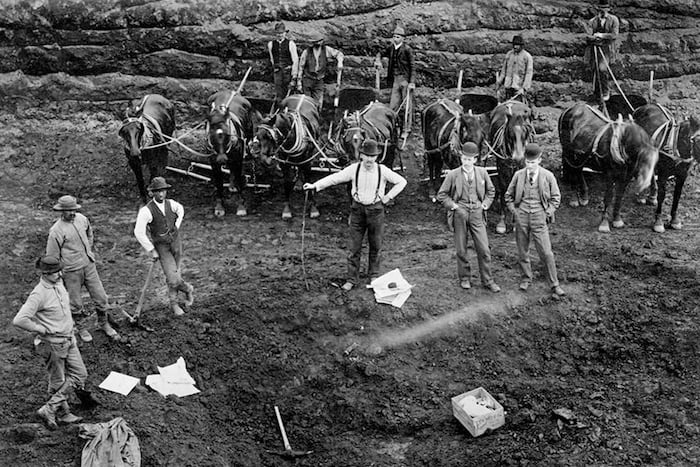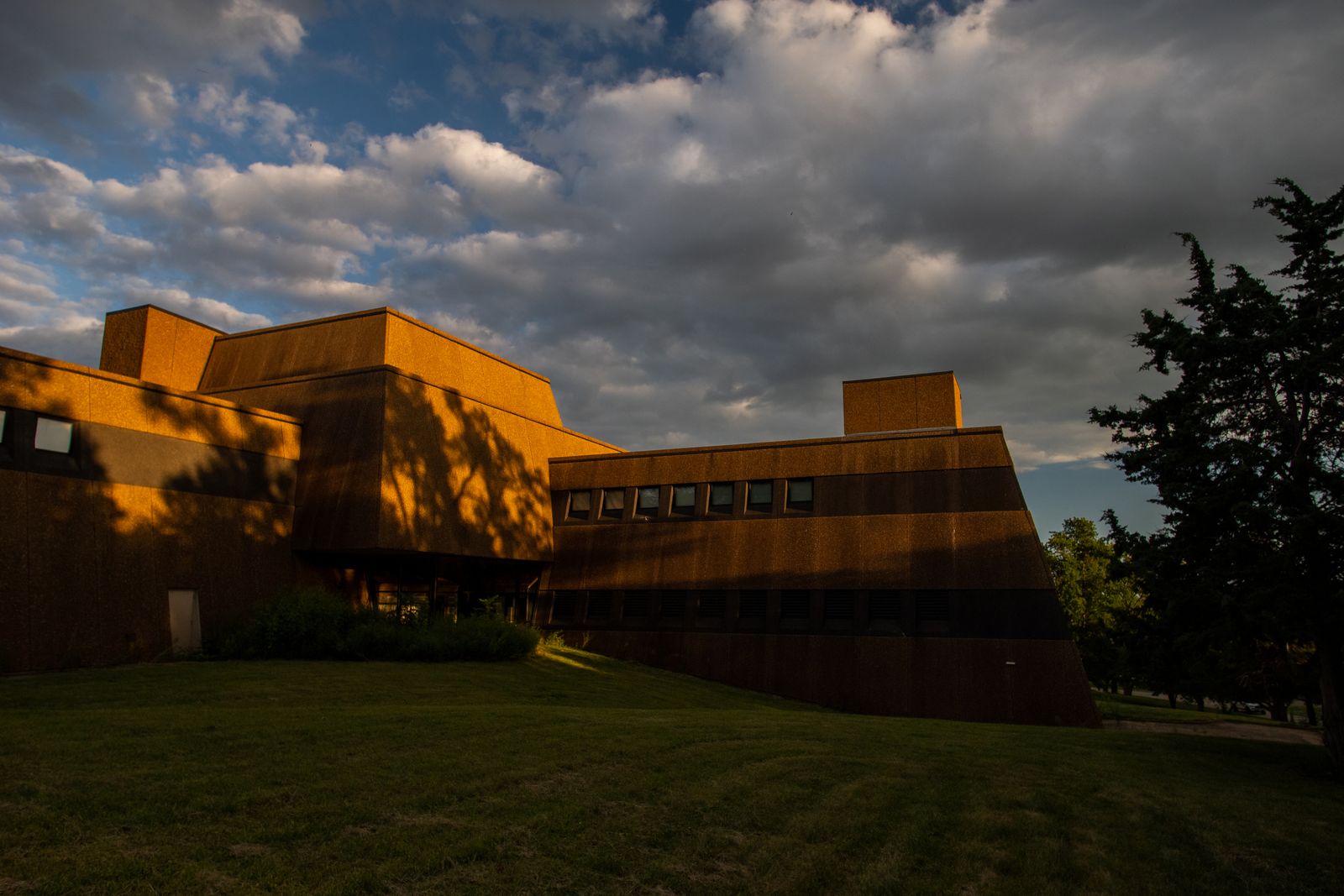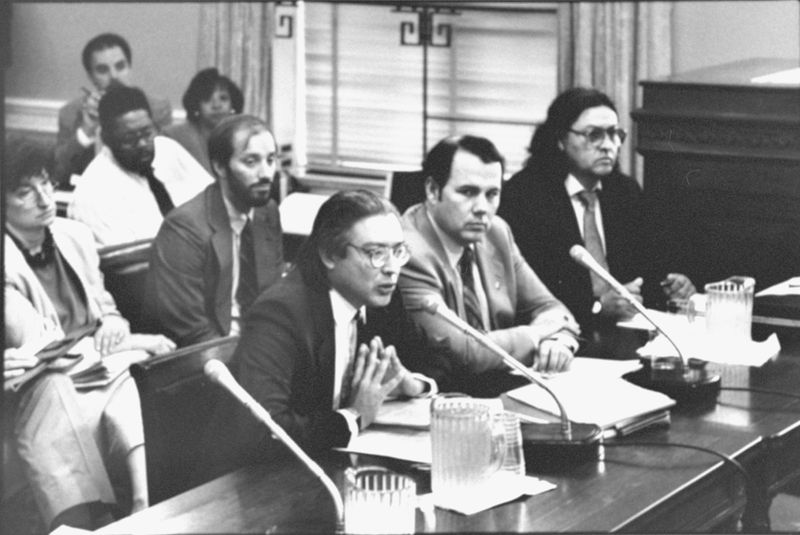Nebraska
Institutions reported making 96% of the more than 3,100 Native American remains taken from Nebraska available for return to tribes under NAGPRA.
There are eight institutions located in Nebraska that reported Native American remains taken from across the country.
| Institution | Remains Not Made Available for Return | Remains Made Available for Return | % of Remains Made Available for Return |
|---|---|---|---|
| Hastings Museum | 45 | 109 | 71% |
| History Nebraska | 37 | 799 | 96% |
| University of Nebraska State Museum | 29 | 1,992 | 99% |
| U.S. Department of Defense | 9 | 446 | 98% |
| Stuhr Museum of the Prairie Pioneer | 2 | 0 | 0% |
| Cass County Historical Society Museum | 1 | 0 | 0% |
| Chadron State College | 0 | 8 | 100% |
| U.S. Department of the Interior | 0 | 118 | 100% |
There are 34 institutions that reported Native American remains taken from Nebraska.
| Institution | Remains Not Made Available for Return | Remains Made Available for Return | % of Remains Made Available for Return |
|---|---|---|---|
| Harvard University | 58 | 63 | 52% |
| American Museum of Natural History | 24 | 1 | 4% |
| University of Michigan Museum of Anthropology | 12 | 0 | 0% |
| Hastings Museum | 4 | 95 | 96% |
| Stuhr Museum of the Prairie Pioneer | 2 | 0 | 0% |
| U.S. Department of Defense | 2 | 41 | 95% |
| U.S. Department of the Interior | 2 | 63 | 97% |
| Cass County Historical Society Museum | 1 | 0 | 0% |
| Cleveland Museum of Natural History | 1 | 0 | 0% |
| History Nebraska | 1 | 794 | 100% |
| Tioga Point Museum | 1 | 0 | 0% |
| University of Kansas | 1 | 0 | 0% |
| University of Kentucky, William S. Webb Museum of Anthropology | 1 | 0 | 0% |
| University of Wyoming | 1 | 2 | 67% |
| Willamette University | 1 | 0 | 0% |
| Buffalo Bill Center of the West | 0 | 1 | 100% |
| Chadron State College | 0 | 8 | 100% |
| Field Museum | 0 | 2 | 100% |
| Fruitlands Museums | 0 | 3 | 100% |
| History Colorado | 0 | 1 | 100% |
| Illinois State Museum | 0 | 1 | 100% |
| Kansas State University | 0 | 2 | 100% |
| Maryland Center for History and Culture (formerly Maryland Historical Society) | 0 | 3 | 100% |
| Milwaukee Public Museum | 0 | 3 | 100% |
| New York University, College of Dentistry | 0 | 2 | 100% |
| Santa Barbara Museum of Natural History | 0 | 1 | 100% |
| University of California, Riverside | 0 | 1 | 100% |
| University of Denver, Museum of Anthropology | 0 | 6 | 100% |
| University of Iowa, Office of the State Archaeologist | 0 | 21 | 100% |
| University of Nebraska State Museum | 0 | 1,955 | 100% |
| University of Pennsylvania Museum of Archaeology and Anthropology | 0 | 1 | 100% |
| University of Tennessee, Knoxville | 0 | 1 | 100% |
| University of Washington | 0 | 3 | 100% |
| Wisconsin Historical Society | 0 | 1 | 100% |
Institutions made Native American remains taken from Nebraska available for return to 59 tribes.
| Tribe | Remains Made Available for Return to Tribe |
|---|---|
| Pawnee Nation of Oklahoma | 2,829 |
| Ponca Tribe of Indians of Oklahoma | 2,195 |
| Three Affiliated Tribes of the Fort Berthold Reservation, North Dakota | 1,624 |
| Ponca Tribe of Nebraska | 1,611 |
| Omaha Tribe of Nebraska | 1,523 |
| Iowa Tribe of Oklahoma | 1,516 |
| Rosebud Sioux Tribe of the Rosebud Indian Reservation, South Dakota | 1,514 |
| Santee Sioux Nation, Nebraska | 1,514 |
| Oglala Sioux Tribe | 1,513 |
| Cheyenne River Sioux Tribe of the Cheyenne River Reservation, South Dakota | 1,512 |
| Yankton Sioux Tribe of South Dakota | 1,511 |
| Standing Rock Sioux Tribe of North and South Dakota | 1,494 |
| Spirit Lake Tribe, North Dakota | 1,493 |
| Winnebago Tribe of Nebraska | 1,478 |
| Kickapoo Tribe of Indians of the Kickapoo Reservation in Kansas | 1,455 |
| Turtle Mountain Band of Chippewa Indians of North Dakota | 813 |
| Otoe-Missouria Tribe of Indians, Oklahoma | 730 |
| Iowa Tribe of Kansas and Nebraska | 710 |
| Wichita and Affiliated Tribes (Wichita, Keechi, Waco and Tawakonie), Oklahoma | 710 |
| Crow Tribe of Montana | 709 |
| Kaw Nation, Oklahoma | 704 |
| Lower Brule Sioux Tribe of the Lower Brule Reservation, South Dakota | 699 |
| Northern Cheyenne Tribe of the Northern Cheyenne Indian Reservation, Montana | 699 |
| Assiniboine and Sioux Tribes of the Fort Peck Indian Reservation, Montana | 698 |
| Crow Creek Sioux Tribe of the Crow Creek Reservation, South Dakota | 698 |
| Northern Arapaho Tribe of the Wind River Reservation, Wyoming | 695 |
| Cheyenne and Arapaho Tribes, Oklahoma | 682 |
| Comanche Nation, Oklahoma | 672 |
| Kiowa Indian Tribe of Oklahoma | 672 |
| Sisseton-Wahpeton Oyate of the Lake Traverse Reservation, South Dakota | 672 |
| Apache Tribe of Oklahoma | 671 |
| Prairie Band of Potawatomi Nation | 663 |
| Sac and Fox Nation of Missouri in Kansas and Nebraska | 663 |
| Sac and Fox Nation, Oklahoma | 663 |
| Sac and Fox Tribe of the Mississippi in Iowa | 663 |
| Delaware Nation, Oklahoma | 642 |
| Delaware Tribe of Indians | 642 |
| Kickapoo Tribe of Oklahoma | 642 |
| Flandreau Santee Sioux Tribe of South Dakota | 48 |
| Lower Sioux Indian Community in the State of Minnesota | 29 |
| Upper Sioux Community, Minnesota | 29 |
| Eastern Shoshone Tribe of the Wind River Reservation, Wyoming | 26 |
| Shoshone-Paiute Tribes of the Duck Valley Reservation, Nevada | 26 |
| Citizen Potawatomi Nation, Oklahoma | 21 |
| Ho-Chunk Nation of Wisconsin | 21 |
| Miami Tribe of Oklahoma | 21 |
| Osage Nation | 21 |
| Peoria Tribe of Indians of Oklahoma | 21 |
| Fort Sill Apache Tribe of Oklahoma | 9 |
| Blackfeet Tribe of the Blackfeet Indian Reservation of Montana | 8 |
| Jicarilla Apache Nation, New Mexico | 8 |
| Mescalero Apache Tribe of the Mescalero Reservation, New Mexico | 8 |
| Northwestern Band of Shoshoni Nation | 8 |
| Prairie Island Indian Community in the State of Minnesota | 8 |
| Shakopee Mdewakanton Sioux Community of Minnesota | 8 |
| Shoshone-Bannock Tribes of the Fort Hall Reservation | 8 |
| Southern Ute Indian Tribe of the Southern Ute Reservation, Colorado | 1 |
| Ute Indian Tribe of the Uintah and Ouray Reservation, Utah | 1 |
| Ute Mountain Ute Tribe | 1 |
Institutions reported Native American remains taken from 66 counties in Nebraska.
| County | Remains Taken From County Not Made Available for Return | Remains Made Available for Return | % of Remains Made Available for Return |
|---|---|---|---|
| Douglas County | 20 | 245 | 92% |
| Custer County | 15 | 8 | 35% |
| Cass County | 4 | 228 | 98% |
| Richardson County | 4 | 49 | 92% |
| Scotts Bluff County | 4 | 62 | 94% |
| Thurston County | 3 | 3 | 50% |
| Washington County | 2 | 50 | 96% |
| Hall County | 1 | 6 | 86% |
| Harlan County | 1 | 72 | 99% |
| Hitchcock County | 1 | 16 | 94% |
| Kimball County | 1 | 0 | 0% |
| Nance County | 1 | 56 | 98% |
| Platte County | 1 | 21 | 95% |
| Sarpy County | 1 | 123 | 99% |
| Adams County | 0 | 1 | 100% |
| Antelope County | 0 | 10 | 100% |
| Banner County | 0 | 1 | 100% |
| Boone County | 0 | 32 | 100% |
| Box Butte County | 0 | 1 | 100% |
| Boyd County | 0 | 7 | 100% |
| Buffalo County | 0 | 13 | 100% |
| Burt County | 0 | 1 | 100% |
| Butler County | 0 | 12 | 100% |
| Cedar County | 0 | 373 | 100% |
| Chase County | 0 | 2 | 100% |
| Cherry County | 0 | 3 | 100% |
| Colfax County | 0 | 3 | 100% |
| Cuming County | 0 | 10 | 100% |
| Dakota County | 0 | 499 | 100% |
| Dawes County | 0 | 9 | 100% |
| Dawson County | 0 | 3 | 100% |
| Dixon County | 0 | 141 | 100% |
| Dodge County | 0 | 61 | 100% |
| Dundy County | 0 | 3 | 100% |
| Fillmore County | 0 | 1 | 100% |
| Franklin County | 0 | 30 | 100% |
| Frontier County | 0 | 34 | 100% |
| Furnas County | 0 | 18 | 100% |
| Gage County | 0 | 2 | 100% |
| Garden County | 0 | 1 | 100% |
| Garfield County | 0 | 1 | 100% |
| Greeley County | 0 | 3 | 100% |
| Hamilton County | 0 | 1 | 100% |
| Holt County | 0 | 25 | 100% |
| Hooker County | 0 | 3 | 100% |
| Howard County | 0 | 9 | 100% |
| Jefferson County | 0 | 1 | 100% |
| Keith County | 0 | 8 | 100% |
| Keya Paha County | 0 | 1 | 100% |
| Knox County | 0 | 175 | 100% |
| Lancaster County | 0 | 5 | 100% |
| Lincoln County | 0 | 10 | 100% |
| McPherson County | 0 | 8 | 100% |
| Madison County | 0 | 4 | 100% |
| Merrick County | 0 | 28 | 100% |
| Morrill County | 0 | 8 | 100% |
| Nemaha County | 0 | 25 | 100% |
| Polk County | 0 | 2 | 100% |
| Red Willow County | 0 | 11 | 100% |
| Saunders County | 0 | 59 | 100% |
| Sherman County | 0 | 4 | 100% |
| Sioux County | 0 | 6 | 100% |
| Stanton County | 0 | 13 | 100% |
| Thayer County | 0 | 5 | 100% |
| Valley County | 0 | 5 | 100% |
| Webster County | 0 | 67 | 100% |
Know how an institution is handling repatriation? Have a personal story to share? We'd like to hear from you.
Watch an informational webinar with our reporters.
This tool presents a dataset maintained by the National Park Service containing all the Native American human remains and associated funerary objects that institutions have reported to the federal government under the Native American Graves Protection and Repatriation Act. The dataset includes information about the state and county where remains and objects were taken from, which institutions hold them and whether they have been made available for return to tribes.
The data is self-reported by institutions. The amount of unrepatriated Native American remains reported by institutions is a minimum estimate of individuals and institutions frequently adjust these numbers when they reinventory groups of remains. Some institutions that are subject to NAGPRA have also entirely failed to report the remains in their possession. As a result, the numbers provided are best taken as estimates. The actual number and geographic scope of what’s held by publicly funded institutions is larger than what is presently documented.
ProPublica supplemented this dataset with information about cultural affiliation and disposition to specific tribes by systematically parsing the text of Notices of Inventory Completion published in the Federal Register. An additional dataset from the Department of Housing and Urban Development, the Tribal Directory Assessment Tool, was used for the section on remains not made available for return from counties that each tribe has indicated interest in to the federal government.
Institution location and tribal headquarters location information was provided by National NAGPRA. The location of some groups that are not federally recognized was provided through research by ProPublica.
Institutions that are part of a larger entity are grouped. (For example, the Mesa Verde National Park is part of the U.S. Department of the Interior.)
Institutions that have not submitted information to the federal government are not listed. The Smithsonian Institution is not listed because its repatriation process falls under the National Museum of the American Indian Act and it is not required to publicly report its holdings with the same detail as institutions subject to NAGPRA.
If you work for an institution and would like to provide comment on your institution’s repatriation efforts, please email [email protected]. If you think the data is incorrect or have a data request, please get in touch. We are aware of some issues with the accuracy of location information and tribes mistakenly being identified for disposition of Native American remains in published notices.
If you want to share something else with ProPublica, we’d like to hear from you.
If you have questions about implementing or complying with the Native American Graves Protection and Repatriation Act, get in touch with National NAGPRA or the NAGPRA Community of Practice.
We use the word “tribes” to refer to all groups that institutions made Native American remains available to under NAGPRA. This includes tribes, nations, bands, pueblos, communities, Native Alaskan villages, Native Hawaiian organizations and non-federally recognized groups.
Data sources from Department of the Interior, National Park Service, National NAGPRA Program, the Federal Register, Department of Housing and Development, Tribal Directory Assessment Tool


